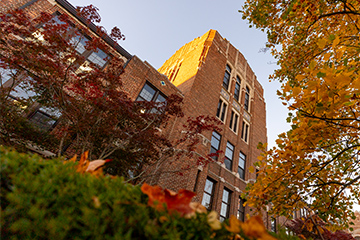Geology student, Joy Youngblood, to present groundbreaking lithium research at GSA Connects 2024
Due to its use in energy storage —think electric car batteries! — lithium is
crucial for a carbon-free, sustainable future. But lithium resources are not easy
to find. Joy Youngblood, a 2024 student of the Summer Program in Applied
Research (SPAR), is set to present her innovative research on lithium mineral
occurrences in northern Wisconsin at the Geological Society of America (GSA)
Connects conference in Anaheim, California, this September. The GSA Connects is
one of the largest and most influential global gatherings for geoscientists,
showcasing cutting-edge research from around the world and a great opportunity
for CMU’s Earth and Atmospheric Science faculty and students to present their
findings.
Youngblood recently secured a highly competitive travel grant from the
Mineralogy-Geochemistry-Petrology-Volcanology (MGPV) Division of the GSA. This
grant, awarded to only 20% of the 46 applicants nationwide, will sponsor her
participation in the conference, where she will present her findings.
Youngblood's paper, titled "Geochemical Dispersion Halos of Lithium
Pegmatites as a Potential Exploration Tool: A Preliminary Comparative Study in
Florence County, Northeastern Wisconsin, USA," is co-authored with
M.-L.C. Sirbescu, J. Meldrum, T. Cox, and T.R. Benson, and will be published in
the Geological Society of America Abstracts with Programs (Vol 56).
Youngblood joined Dr. Sirbescu’s lithium exploration team in May 2023 as a
field assistant. During this time, she made a significant discovery of a new
pegmatite on steep, vegetation-covered slopes in northeastern Wisconsin.
Despite the initial appearance that the pegmatite lacked spodumene—the main
lithium ore mineral—Youngblood's passion drove her to collect rock samples,
which later revealed promising results. Supported by a SPAR grant, she returned
to the site in May 2024, where further sampling confirmed that the host rocks
contained significant lithium concentrations up to 10 meters away from the
pegmatite. This finding suggests the presence of additional hidden lithium-rich
pegmatite bodies.
Youngblood's field and lab work has led to the development of new
prospecting practices for lithium pegmatites, which are now being prepared for
publication.




